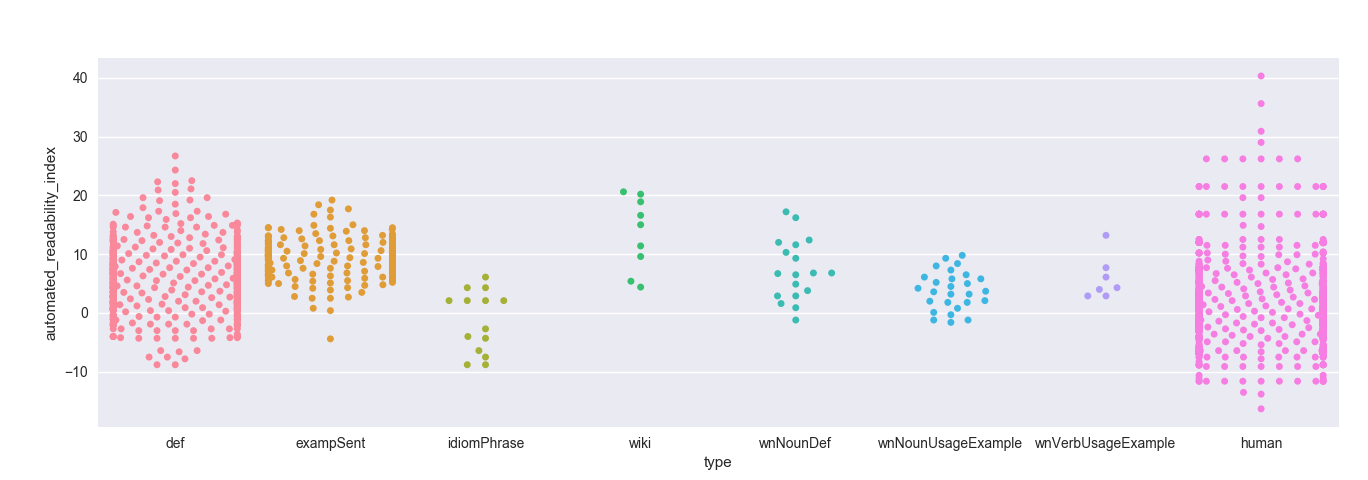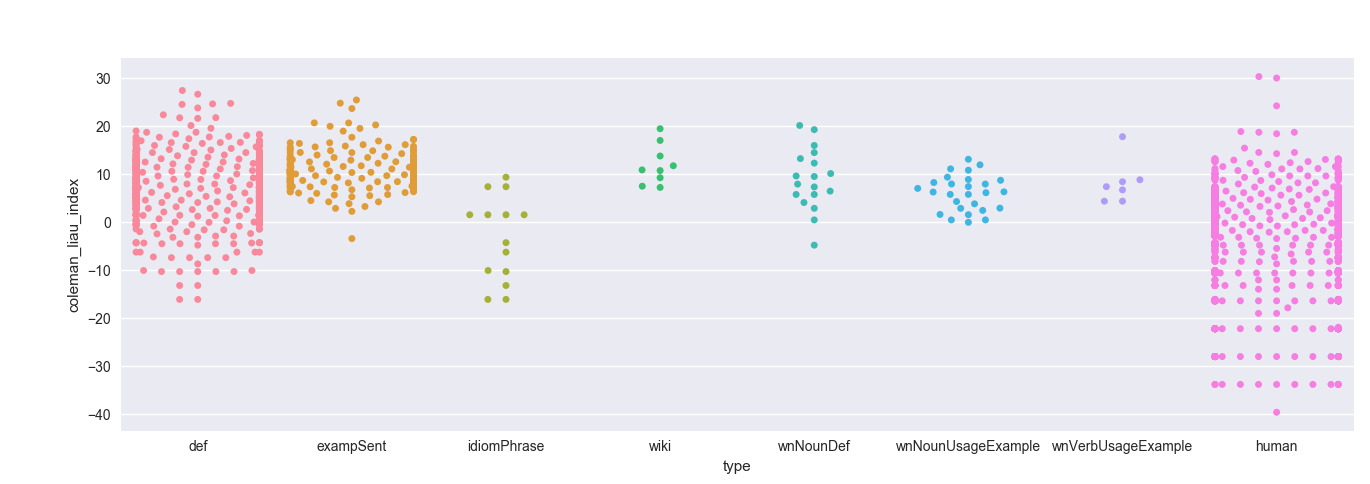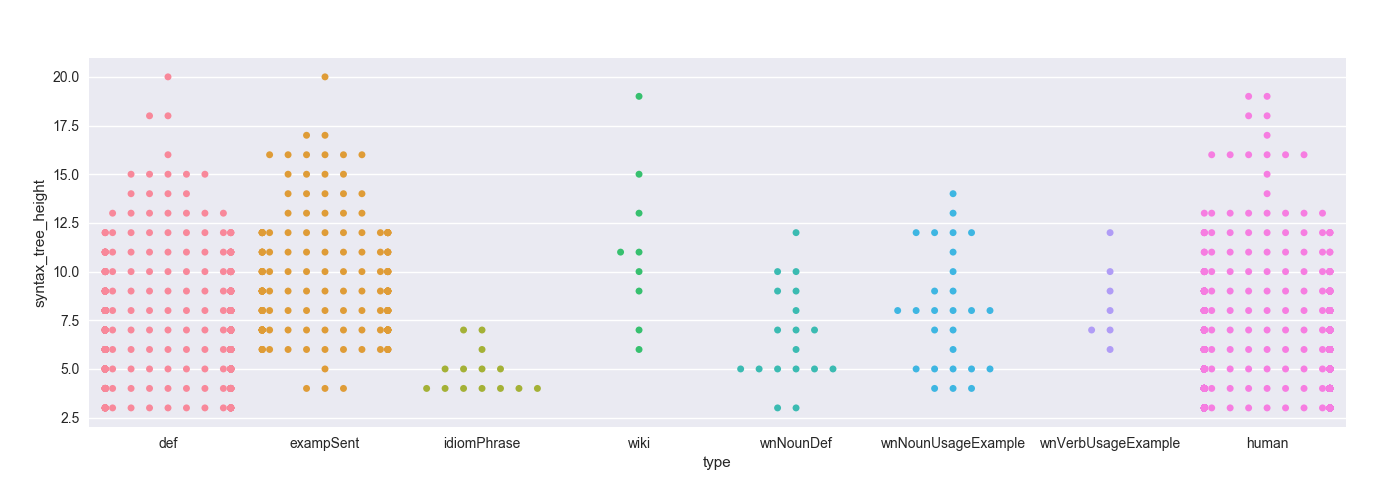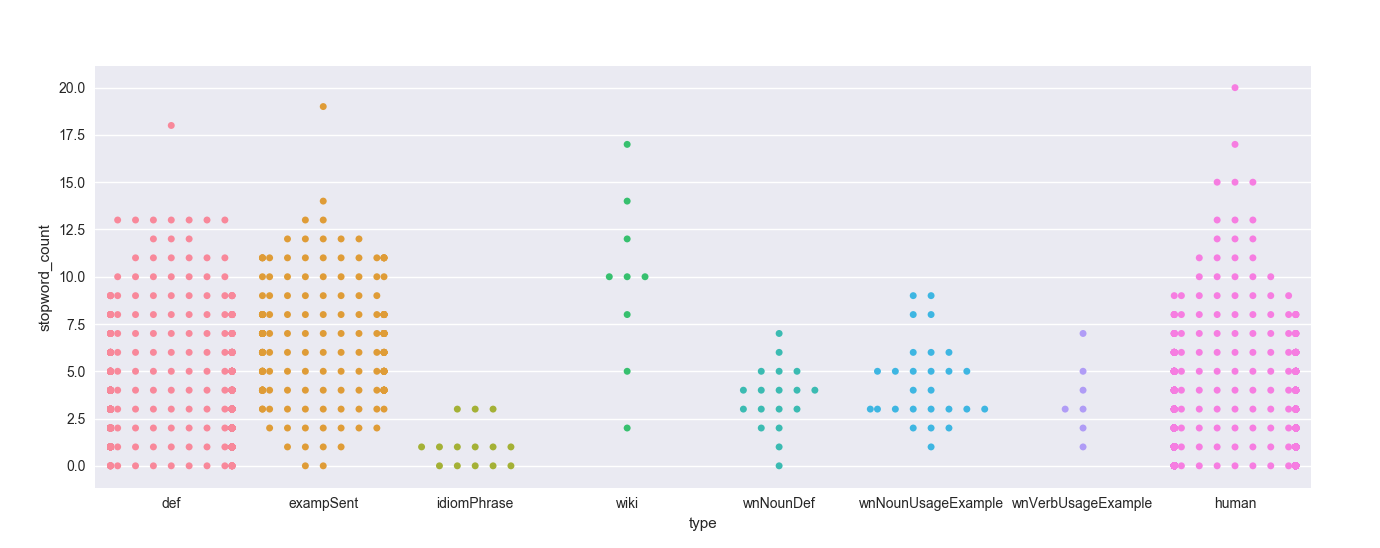Clue Generator
This is the current project that I am actively involved in.
The aim of this project is to provide automated clues to target words. This is a word guessing game between a human and machine. I am using NLP tools to extract various features for the automated clues / the human clue and understand what makes a clue good.
Some of the features of the clue that are being used to better understand clues are:
1) Ratio of Content words vs Function Words
2) Lexicon Count :Not normalized.
3) Syllable Count : Not normalized.
4) Avg Word Length: Normalized.
5) Stop word Count: Not normalized.
6) Bi Gram Fréquence: This is bi gram frequency of the adjacent words in a sentence , source brown corpus. This is not normalized.
7) **Syntax tree height:
8) Non terminal count of syntax tree
9) Avg branching factor
10) Adjective and Participle count: Not normalized.
11) Dependency complexity: Average dependency distances (ADDs) of a sentence. Reference: https://www.researchgate.net/publication/266584664_Syntactic_Dependency_Distance_as_Sentence_Complexity_Measure
12) Flesh reading ease: Output a number from 0 to 100 - a higher score indicates easier reading. An average document has a Flesch Reading Ease score between 6 - 70. As a rule of thumb, scores of 90-100 can be understood by an average 5th grader. 8th and 9th grade students can understand documents with a score of 60-70; and college graduates can understand documents with a score of 0-30.
13) Flesch Kincaid grade: Outputs a U.S. school grade level; this indicates the average student in that grade level can read the text. For example, a score of 7.4 indicates that the text is understood by an average student in 7th grade.
14) Coleman luau grade: Relies on characters instead of syllables per word and sentence length. This formula will output a grade. For example, 10.6 means your text is appropriate for a 10-11th grade high school student.
15) Automated Readability Score: outputs a number which approximates the grade level needed to comprehend the text. For example, if the ARI outputs the number 3, it means students in 3rd grade (ages 8-9 yrs. old) should be able to comprehend the text.
16) Dale Chall Readability Score: It uses a list of 3000 words that groups of fourth-grade American students could reliably understand, considering any word not on that list to be difficult.
17) Gunning Fog: Is similar to the Flesch scale in that it compares syllables and sentence lengths. A Fog score of 5 is readable, 10 is hard, 15 is difficult, and 20 is very difficult. Based on its name, ‘Foggy’ words are words that contain 3 or more syllables.
More info about all the readability tests https://wordcounttools.com/dale_chall_readability_level.html
18) Named Entity Recognition Count: Using NLTK go get the Named Entities in a clue.
The machine clues were also classified based on the type of the clue ( definition, example, sys, wiki, idiomPhrase, wnNounHyper ect. )
Here are some of the observations:
Some of the screenshots of the App.





